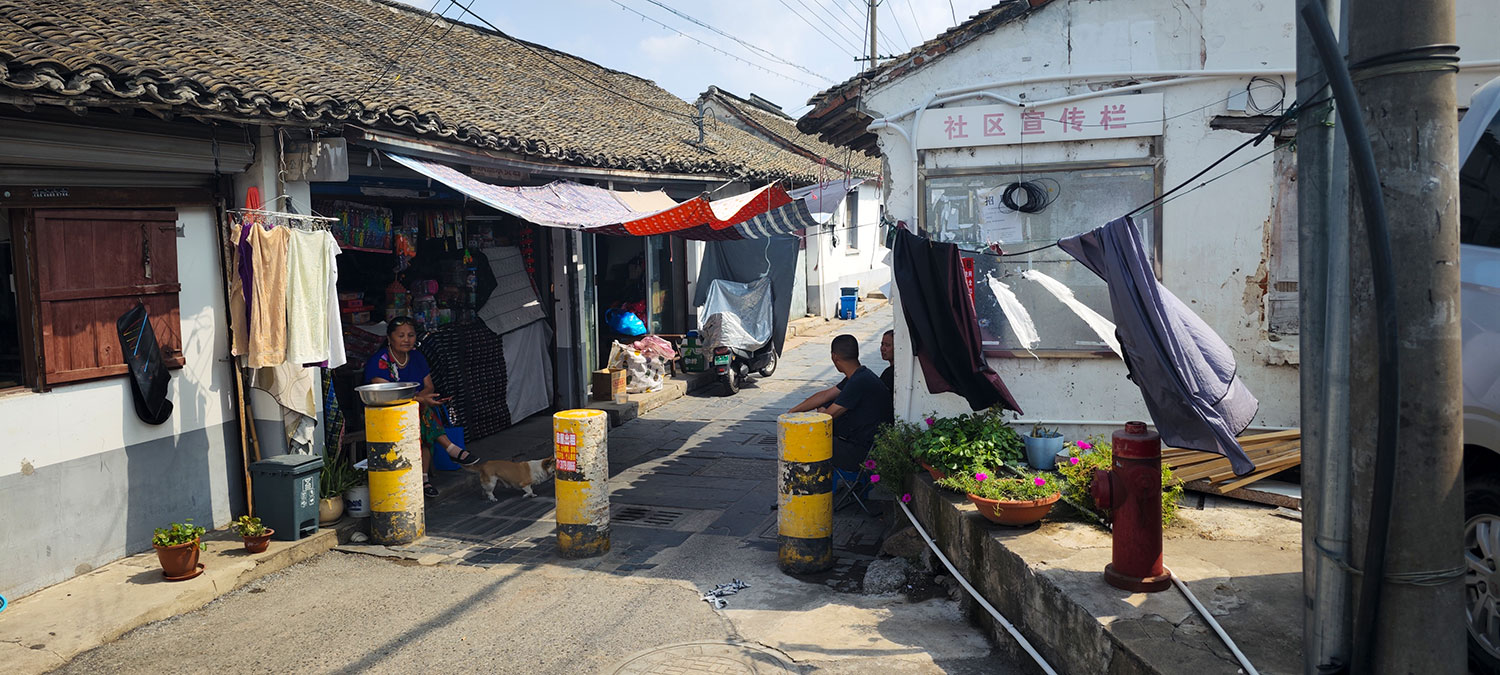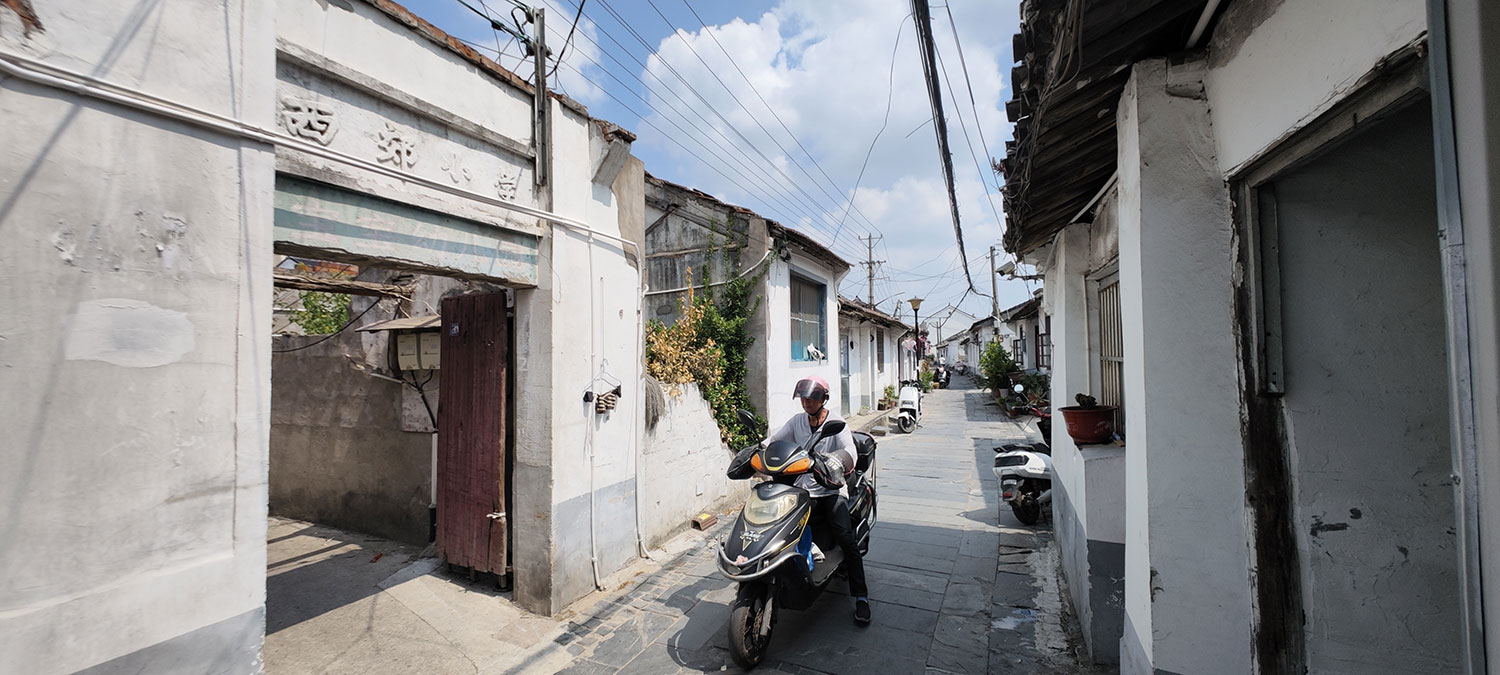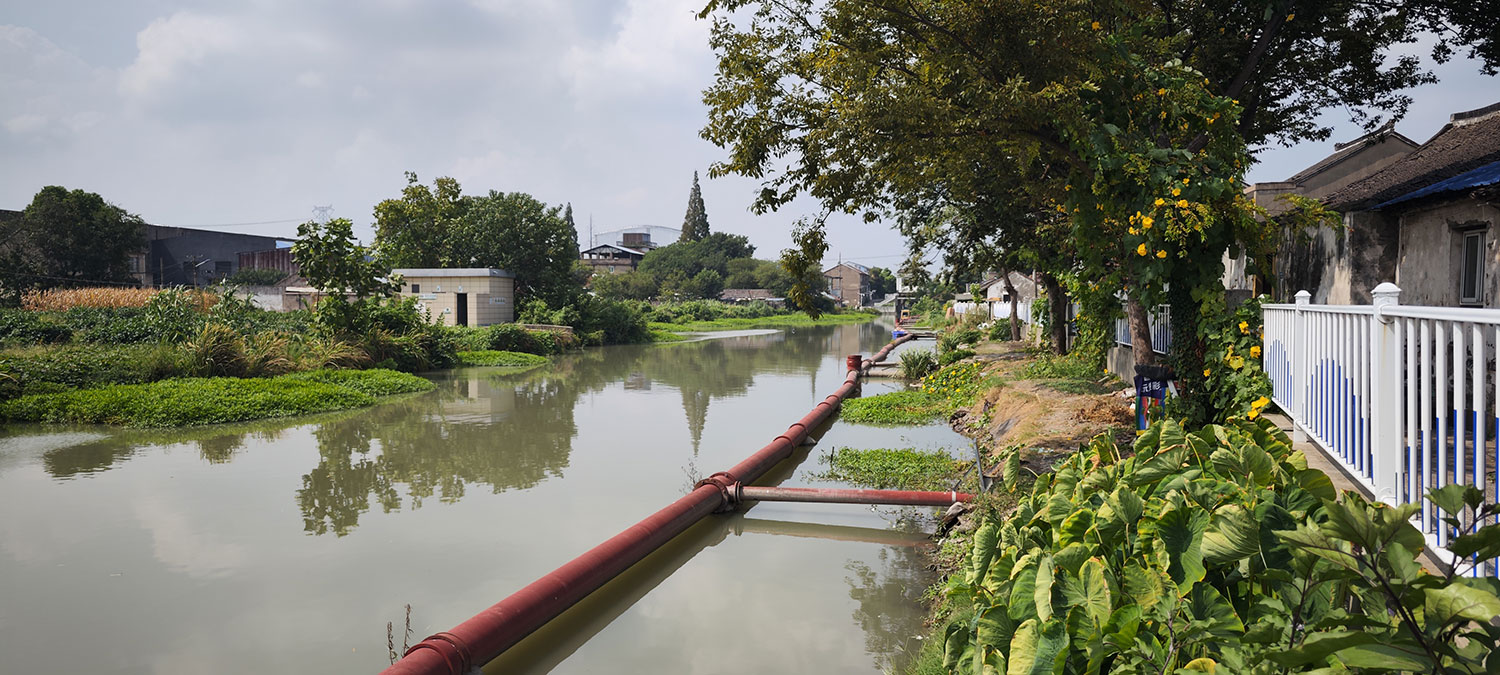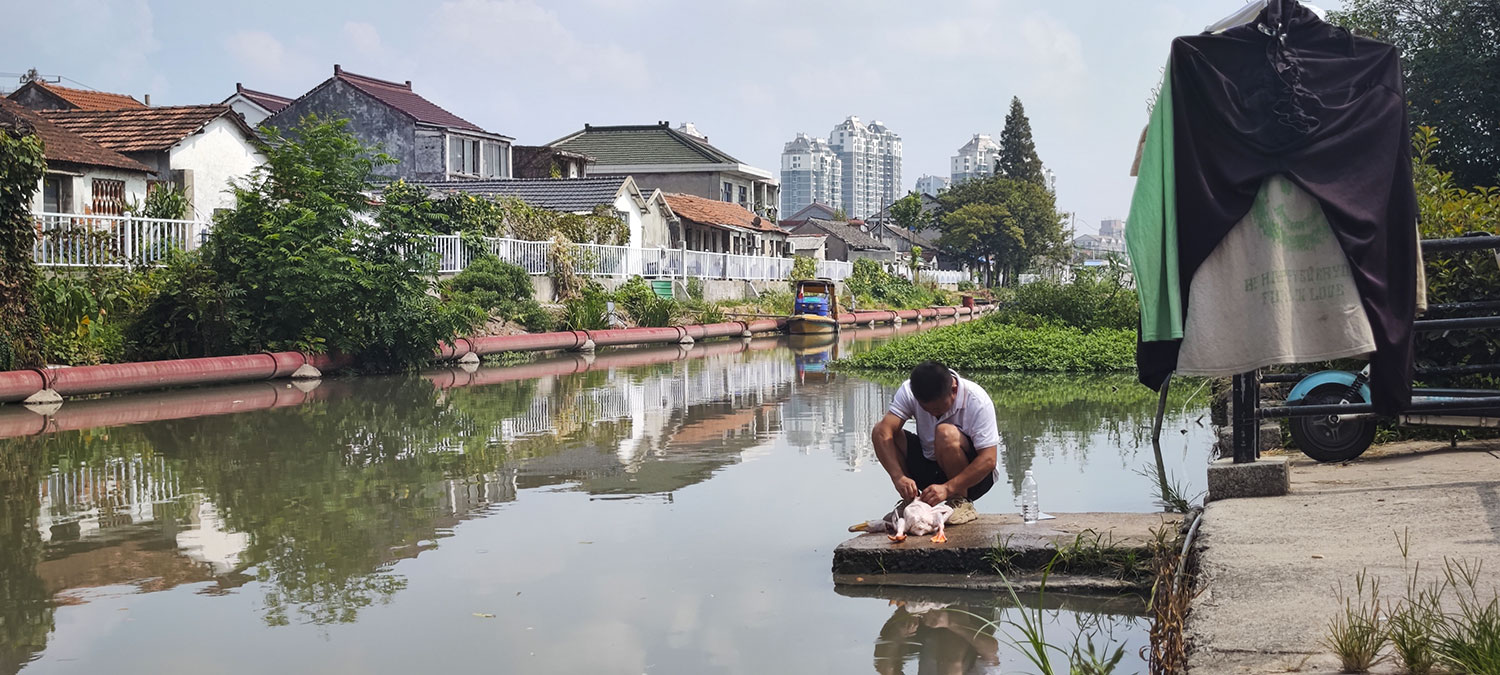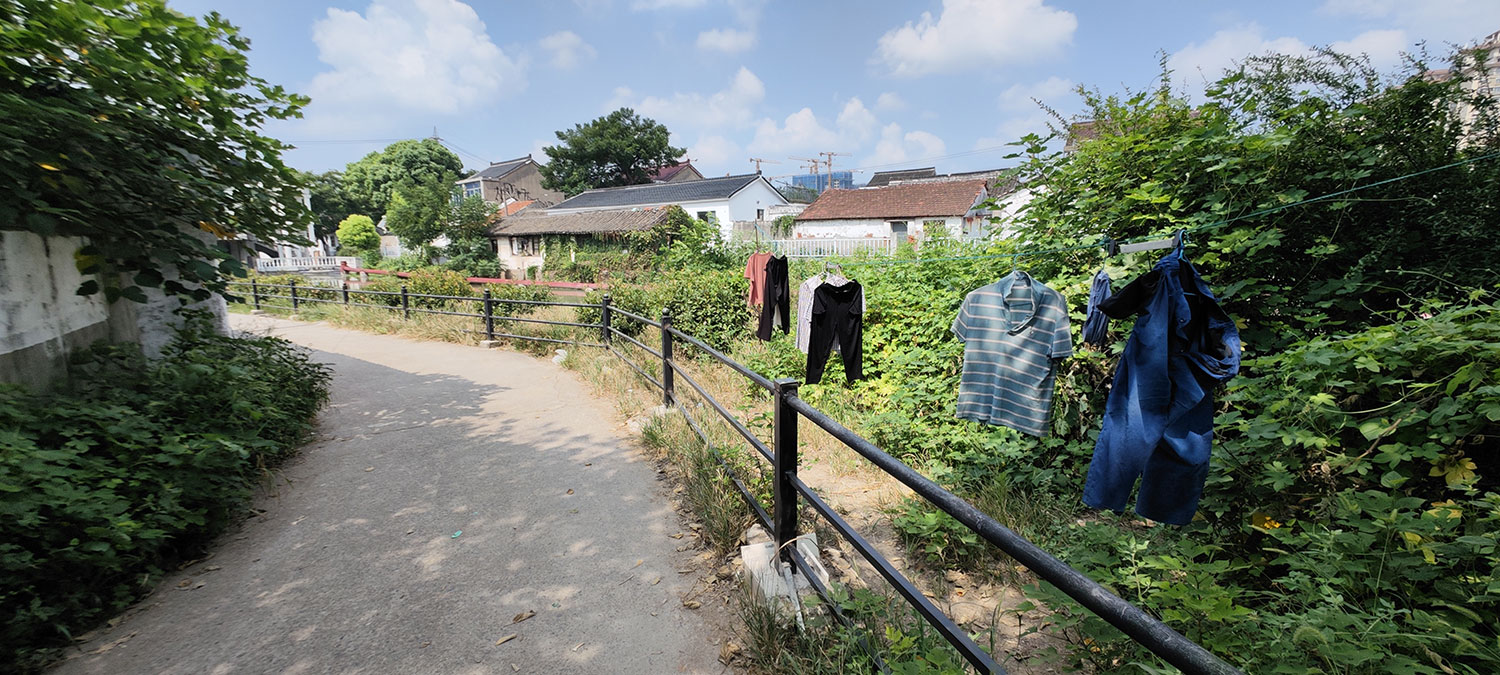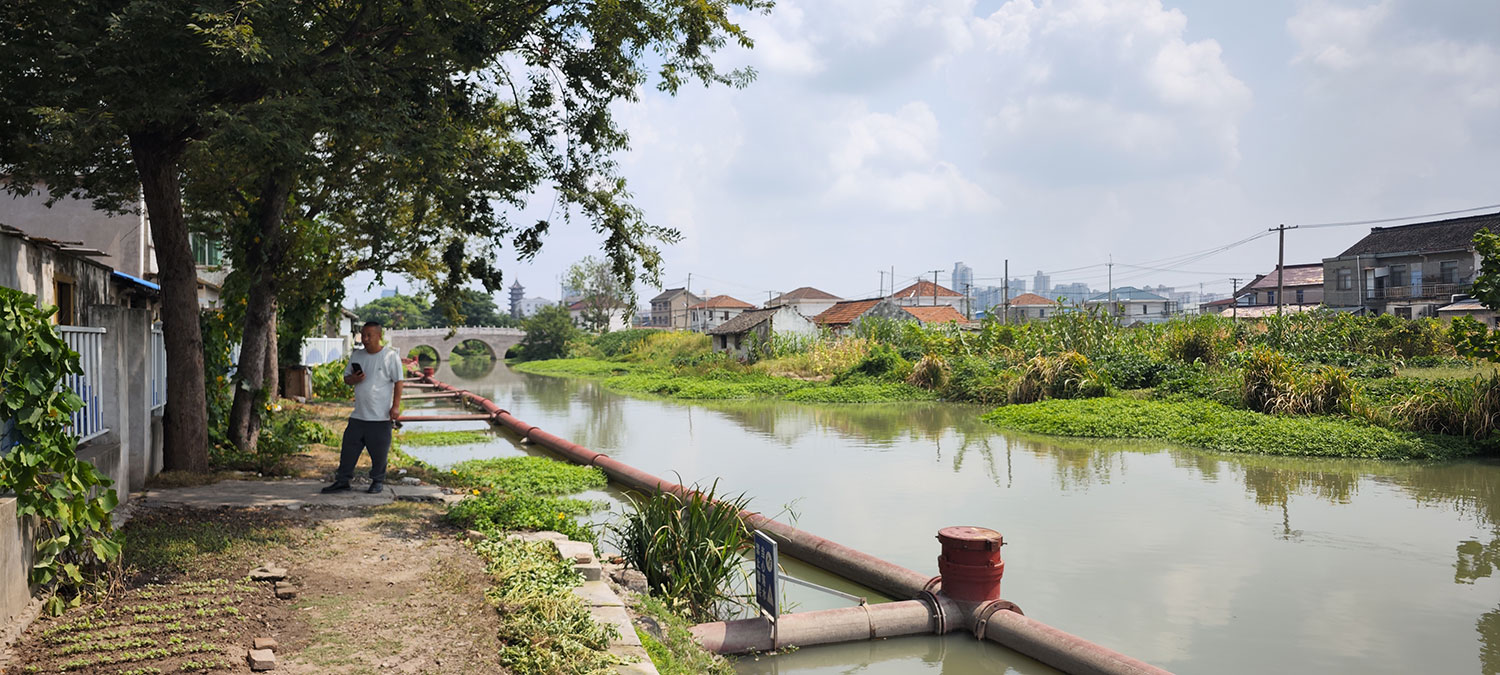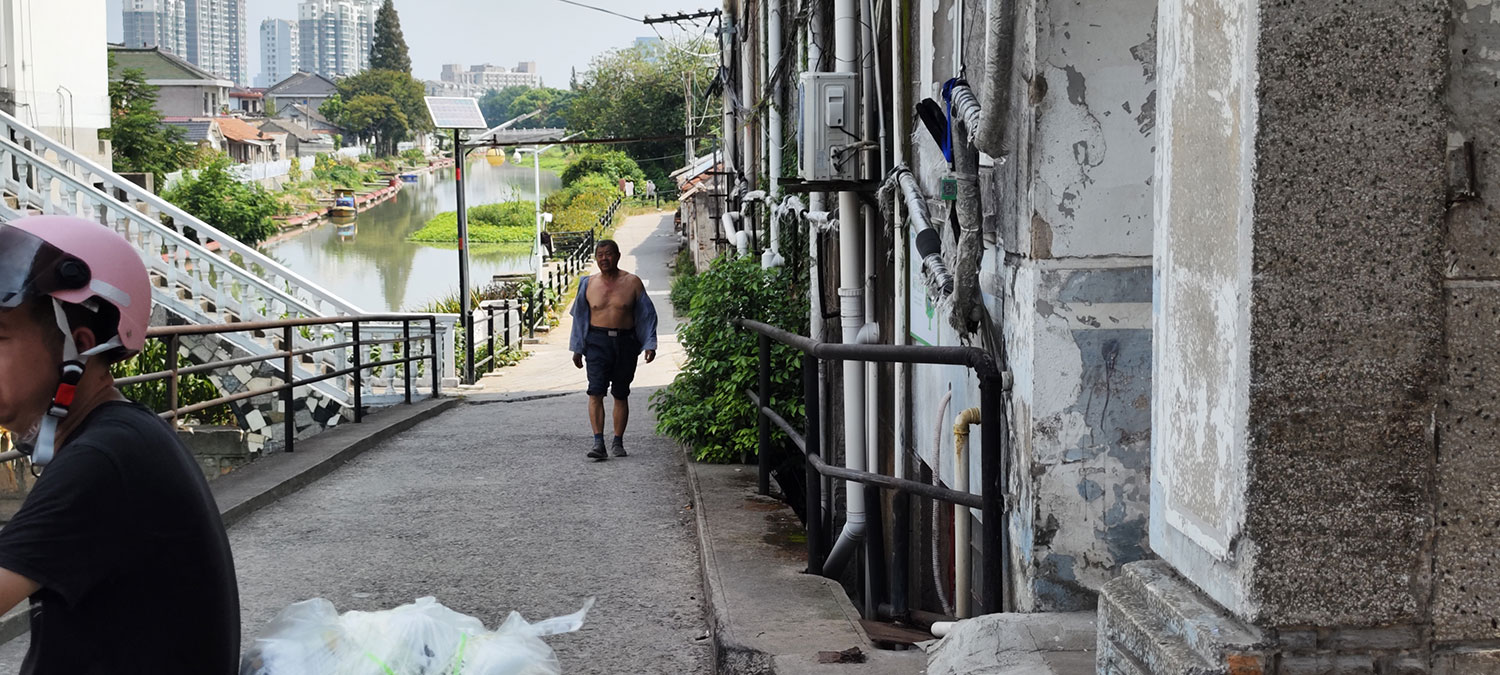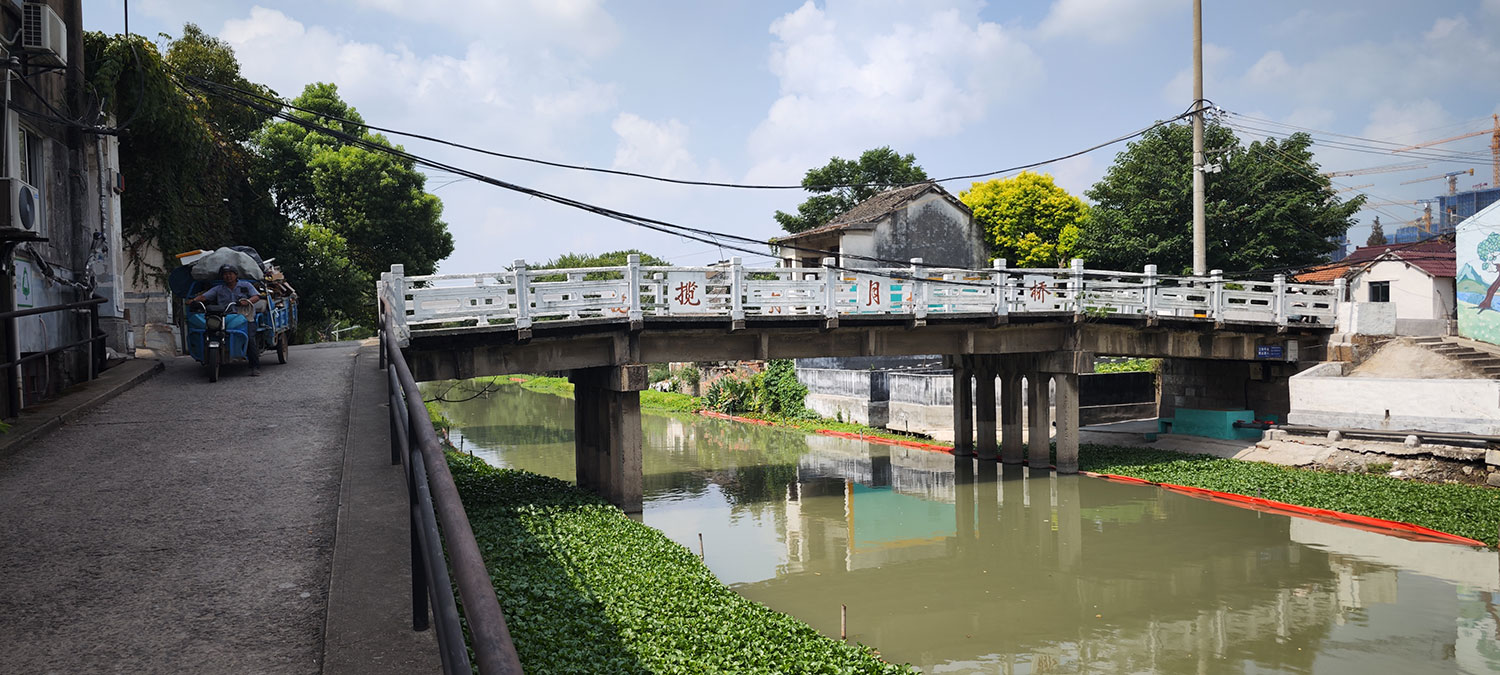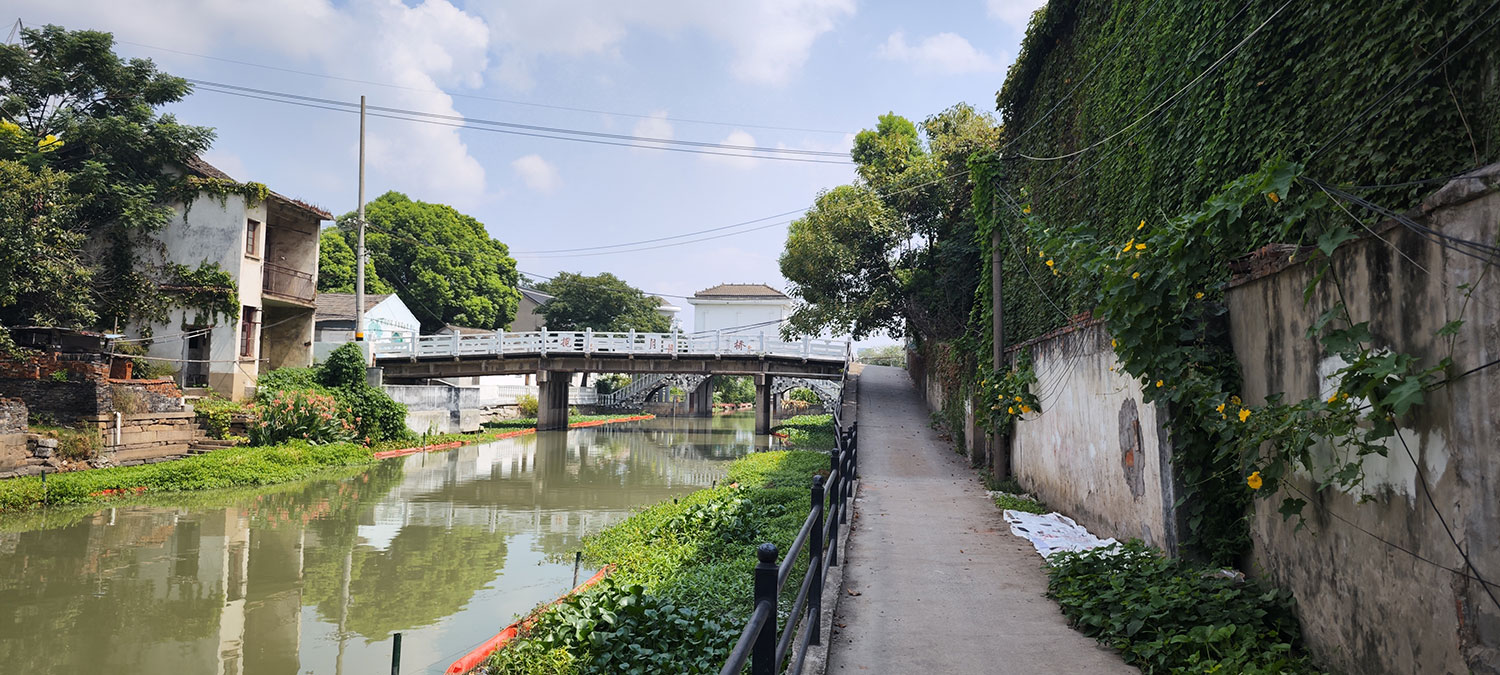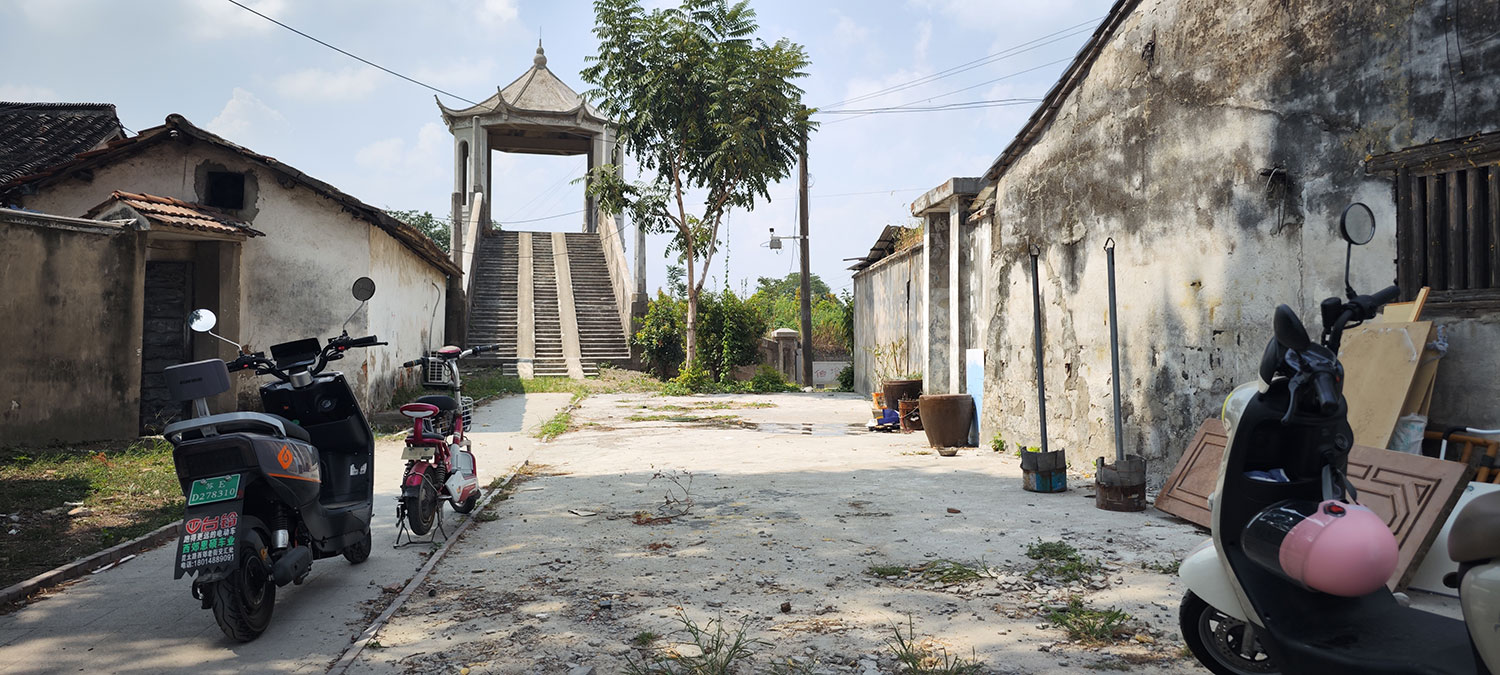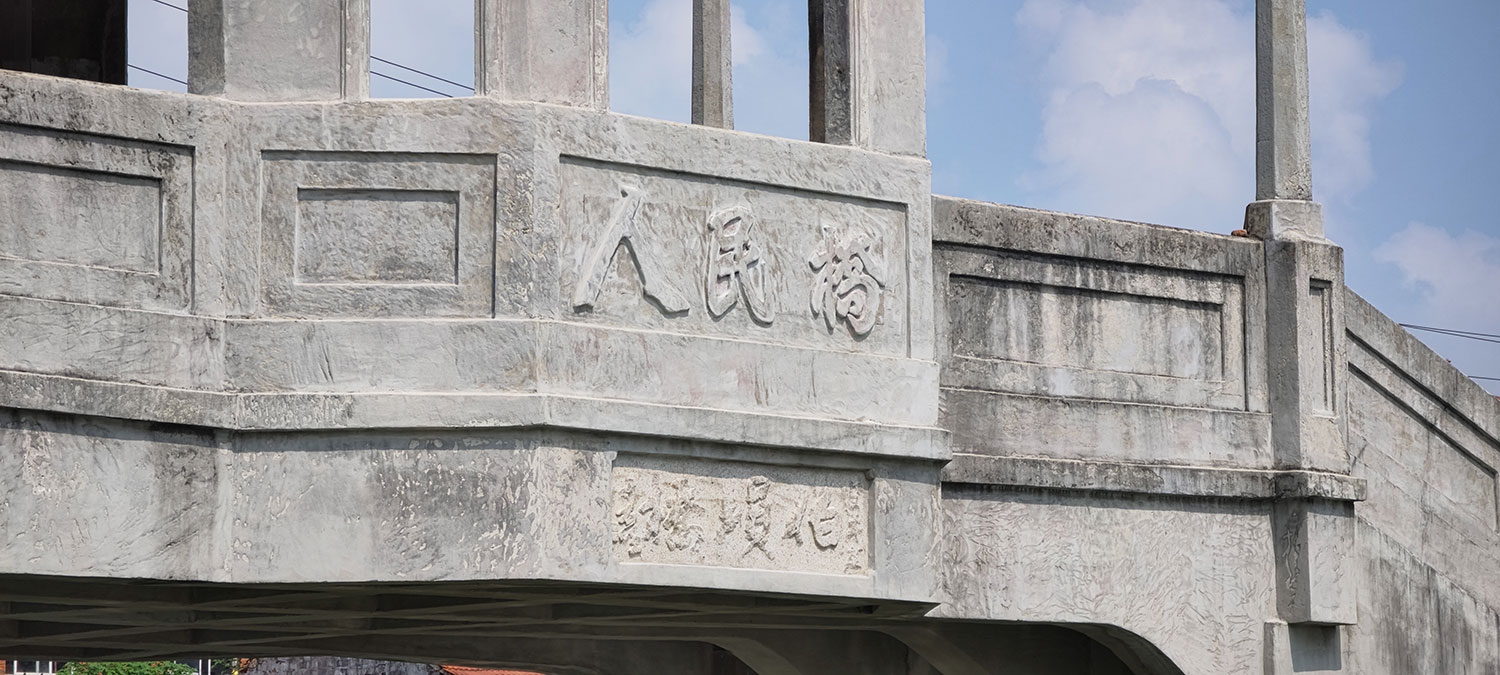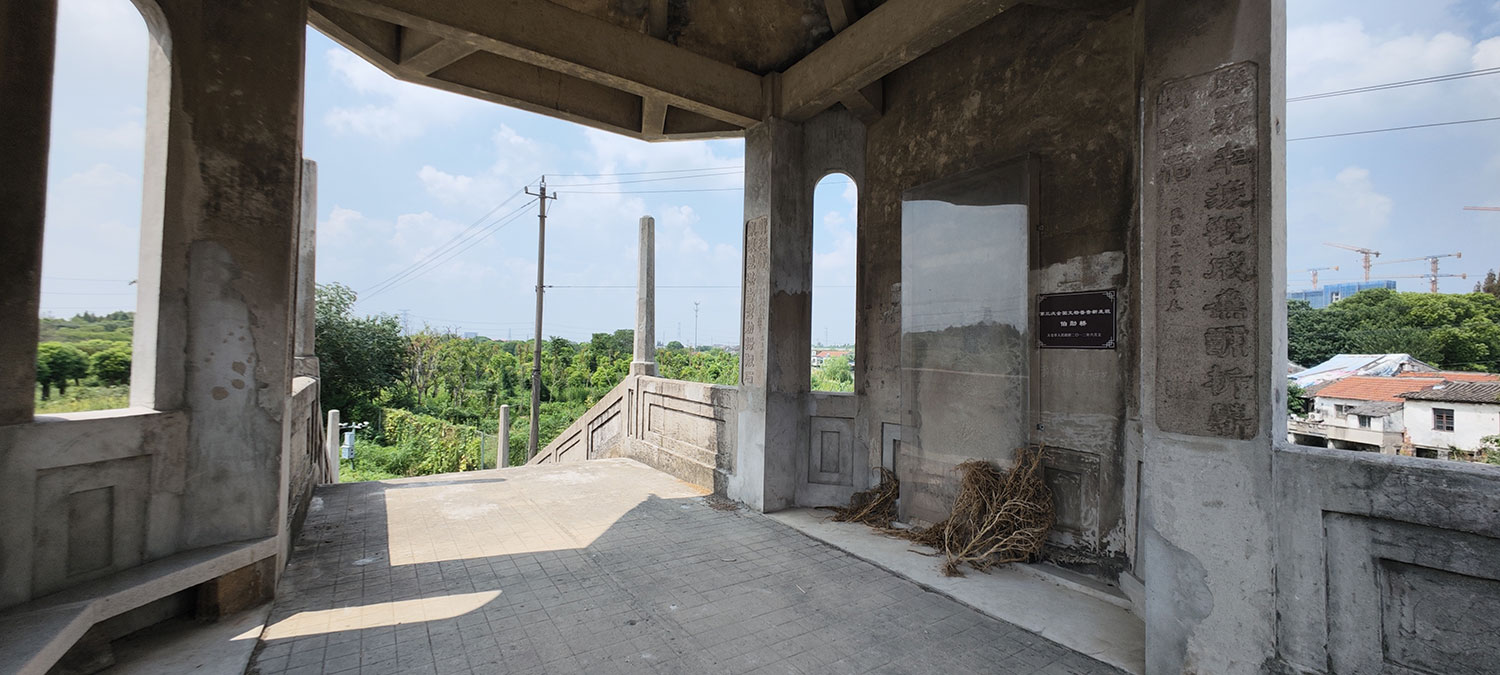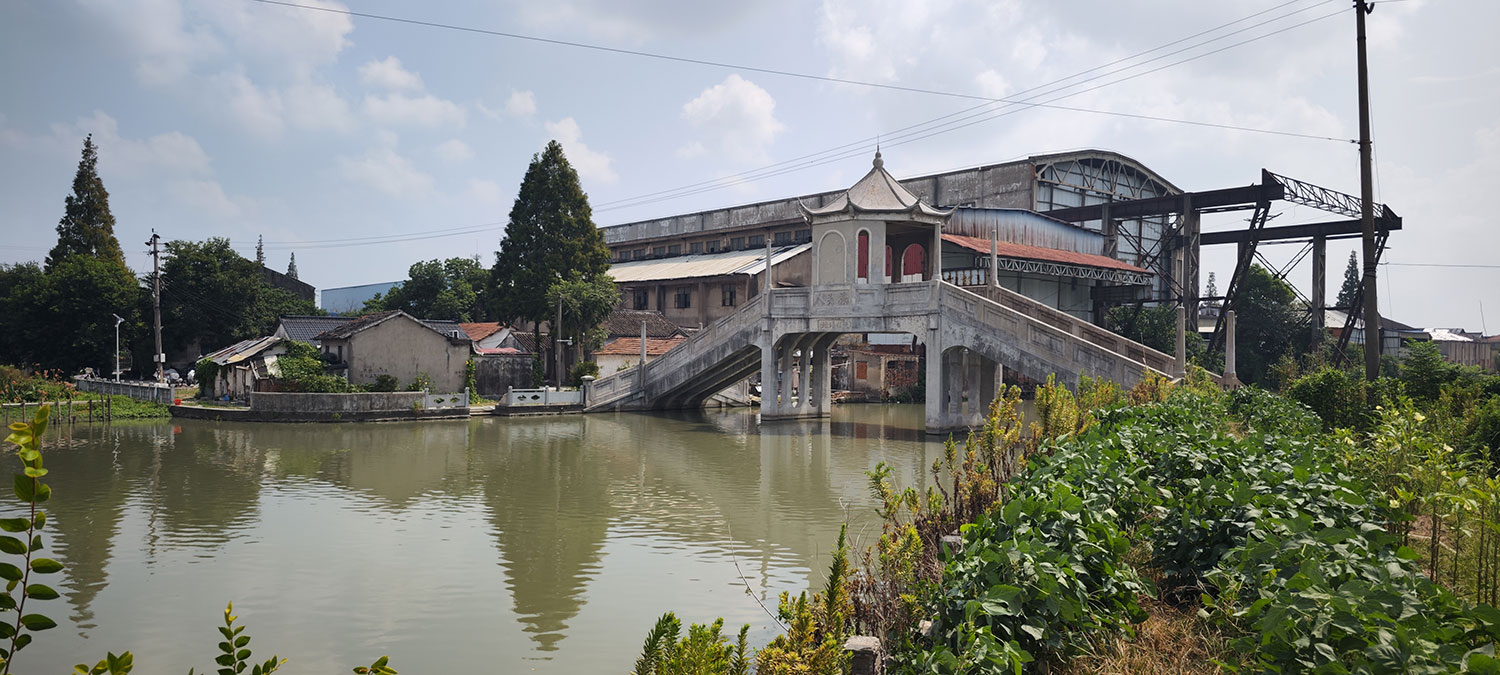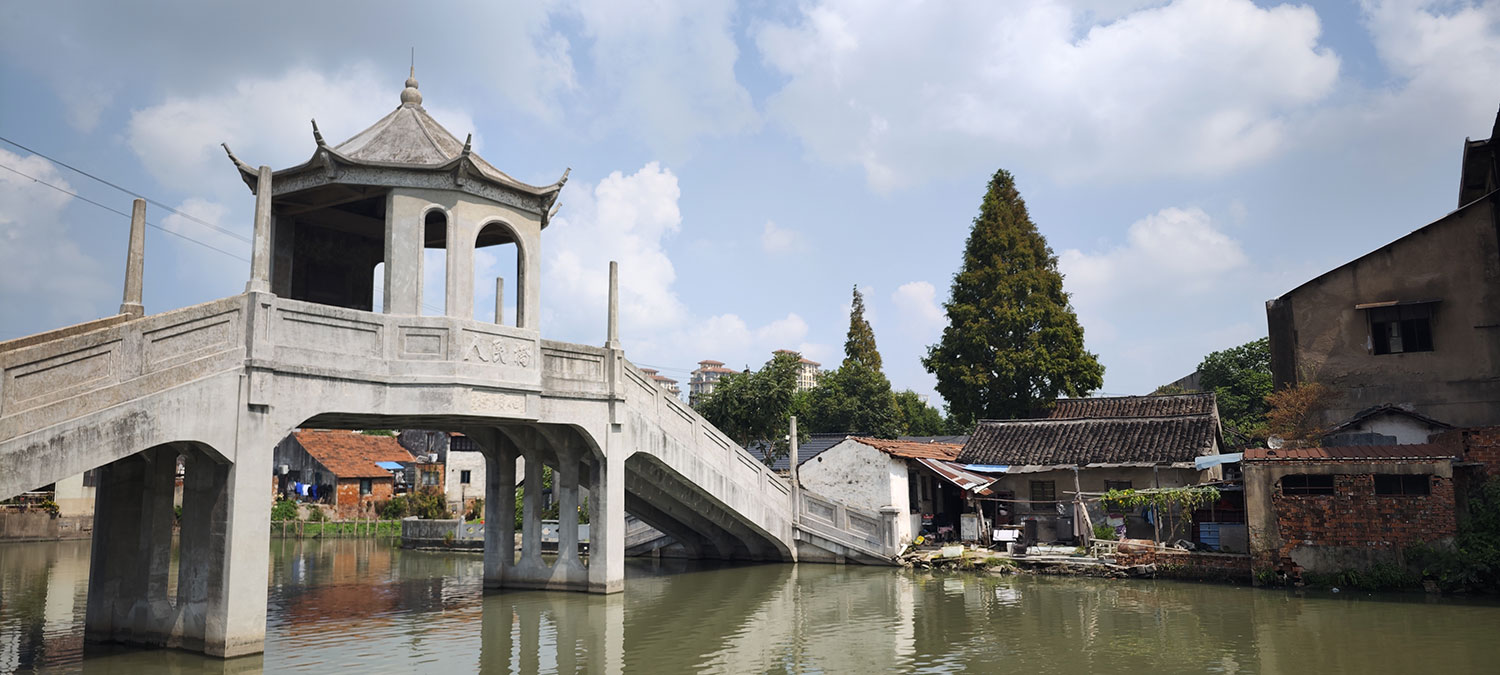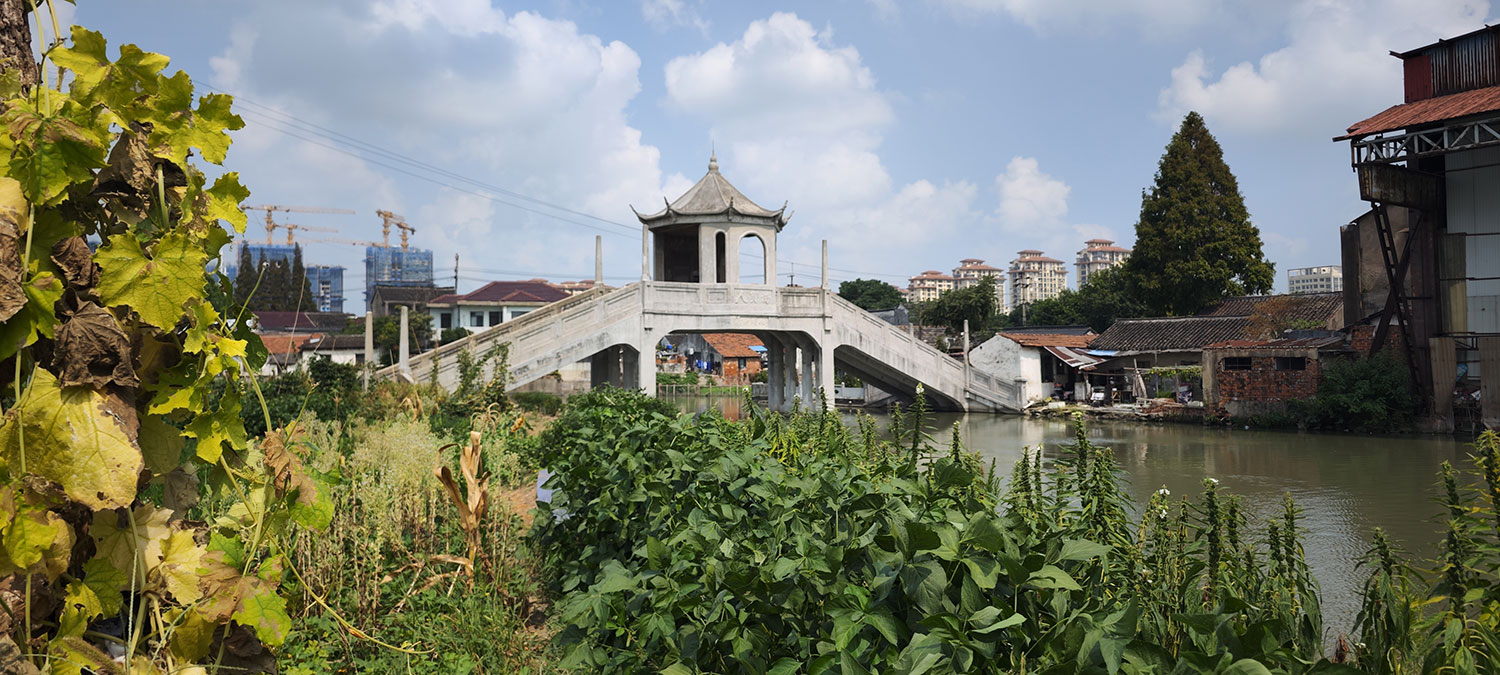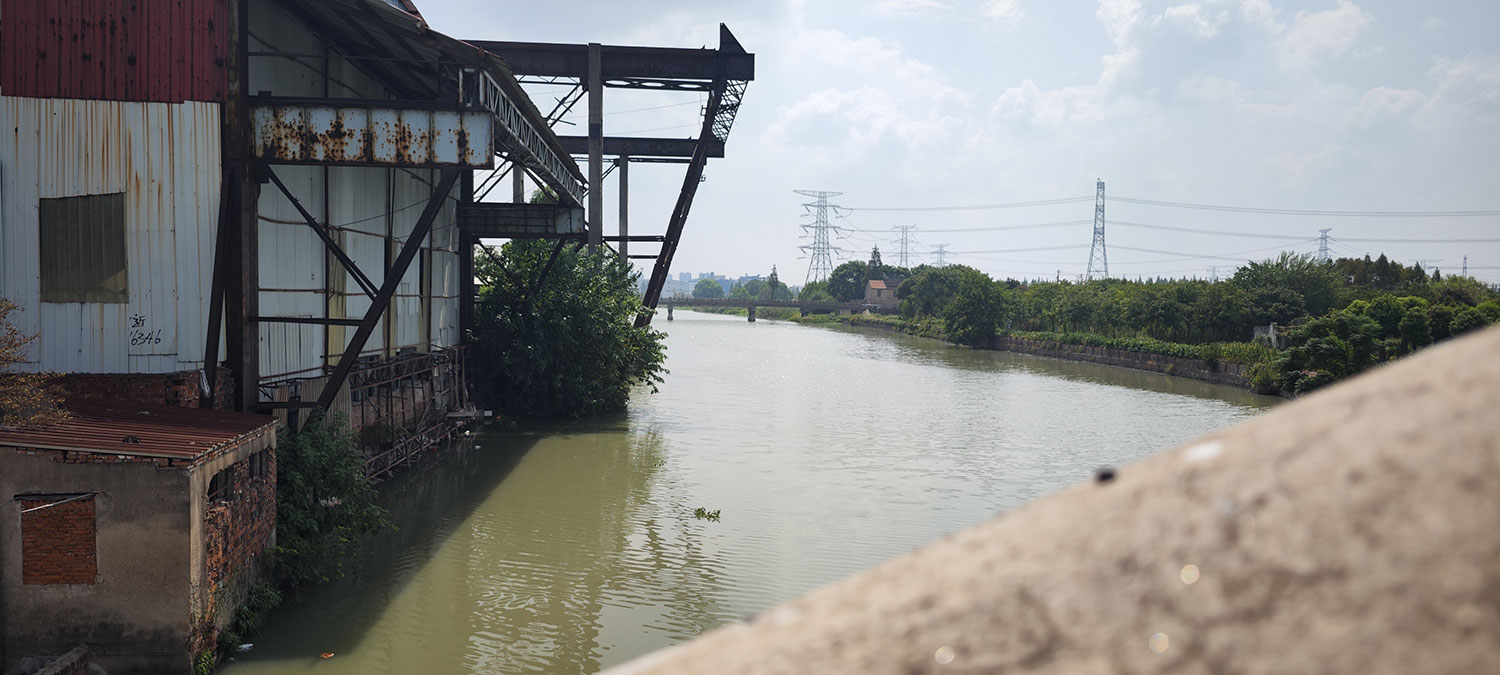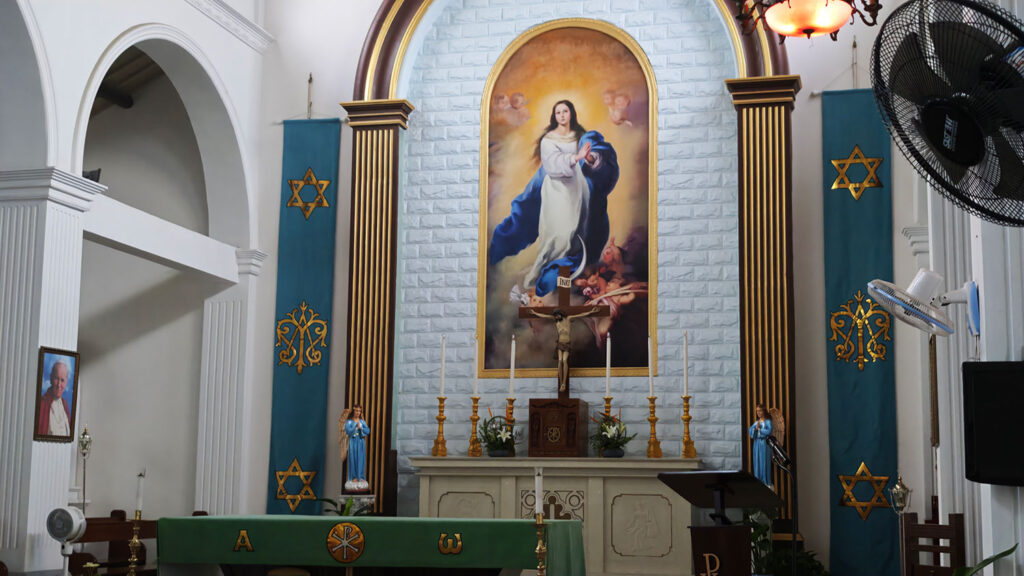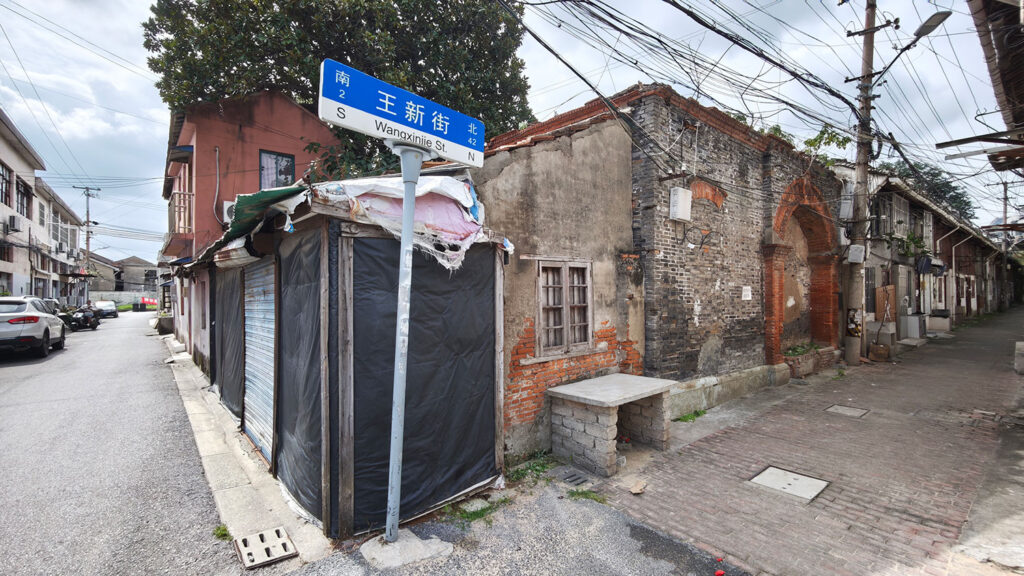On Xiaohongshu, a lady named Niu Er (汼二娘) walks through an old street wearing a long winter coat. After her example, we’ve traveled to the same place, but I’m wearing shorts, sunscreen, and the thinnest shirt I could find. We’re at Xijiao Street (西郊老街) in Taicang (太仓) in Jiangsu, and it’s 35°C.
This street used to be the center of an old market town, built in typical ‘south of the Yangtze’ style. There’s still a sluice, several bridges, and an old primary school — but when I tried to go into there, a barking dog convinced me to do otherwise. Some buildings are beyond repair, but the vast majority is fine, if not a bit old. A middle-aged man crouched near the water to remove the feathers of a goose, before offering me a smoke.
Right where two rivers meet, stands Boxun Bridge (伯埙桥). This bridge connects Taicang with Kunshan (昆山) — although Kunshan’s side is merely a triangular island with garden plots. The bridge itself is filled with history and ceremony. Poems adorn its pillars, it has an inscribed slab in the middle, and it’s part of a local idiom. It was packed with explosives during the war with Japan, but plans to blow it up were cancelled last minute.
Xijiao Street is no longer a destination for anyone, except those living here. The shipyard has closed, and it’s no longer an important location for waterway transport. New, bigger roads have been built, as well as new high-rise apartments.
It’s not threatened with destruction yet, but it is included in Suzhou’s list of important old towns, so it is possible that it will be ‘Disnified’ into a characteristic of its old self. But if they keep the bridge, I’ll be OK with it.
